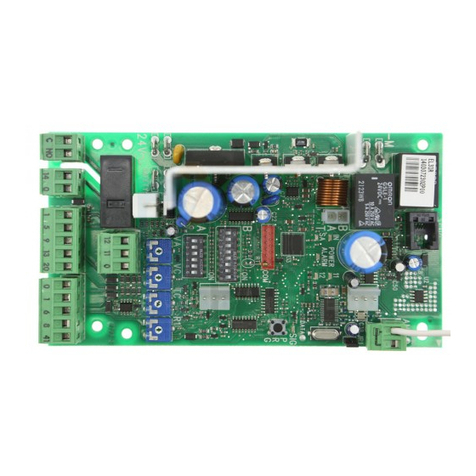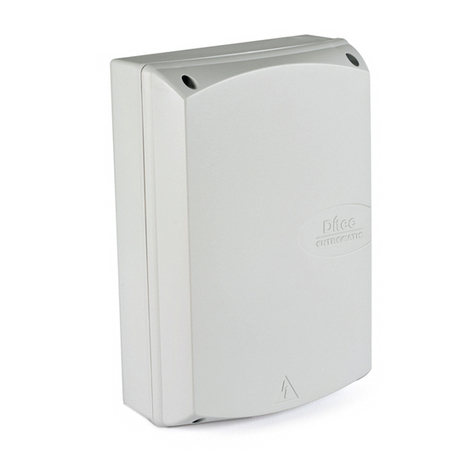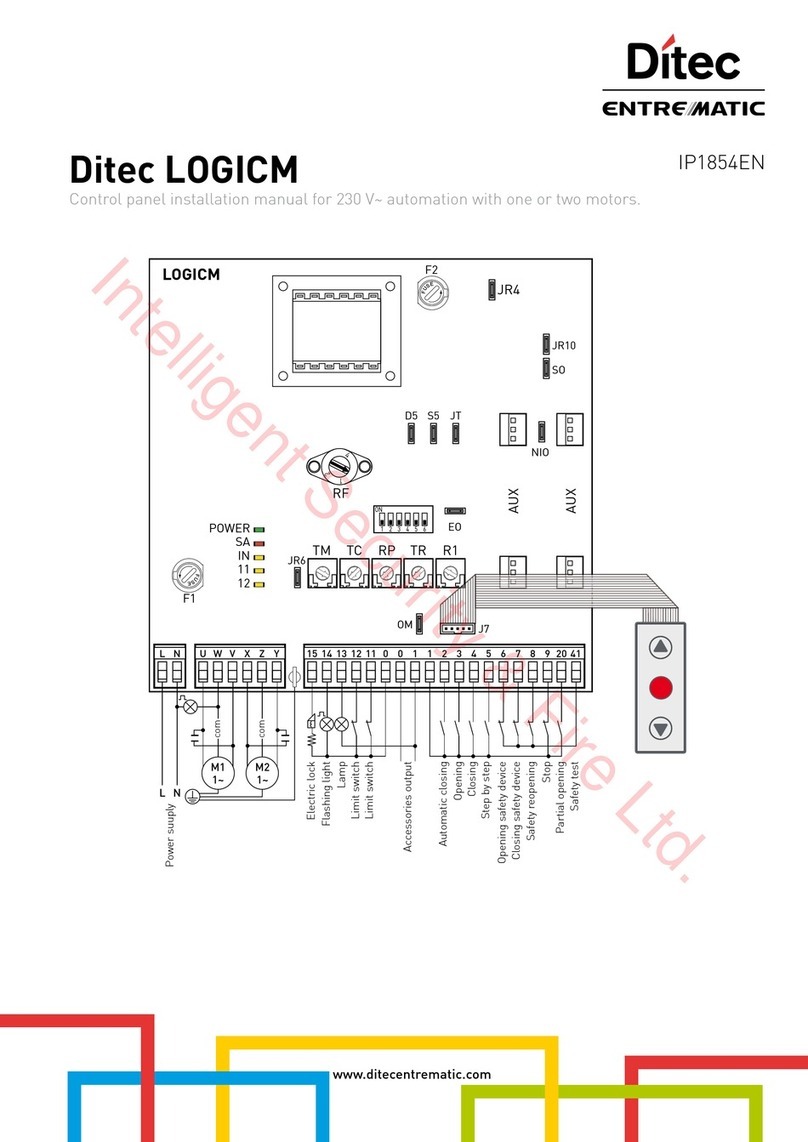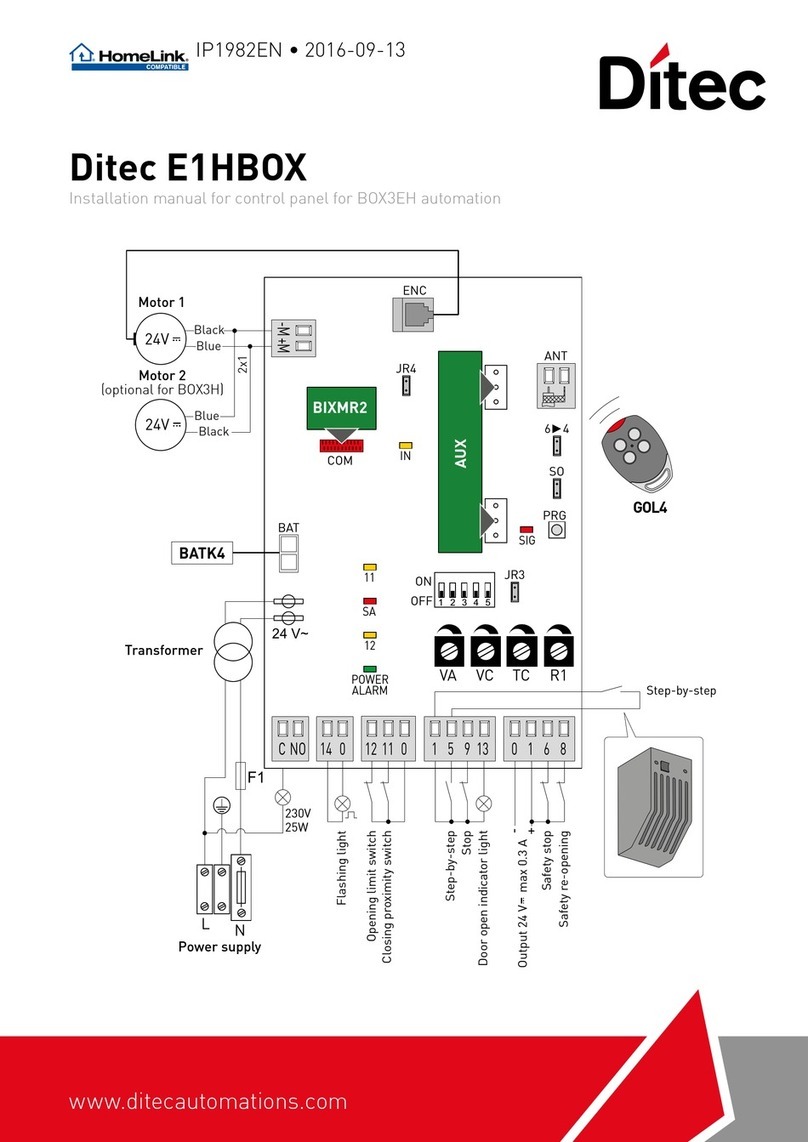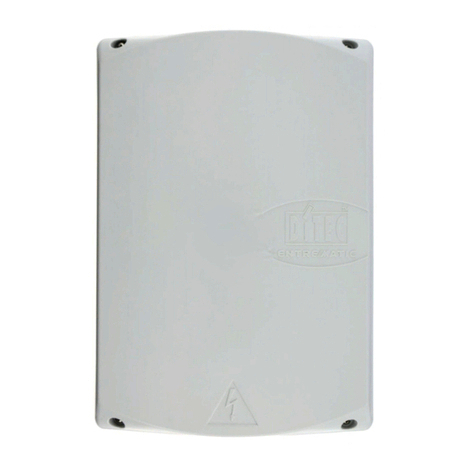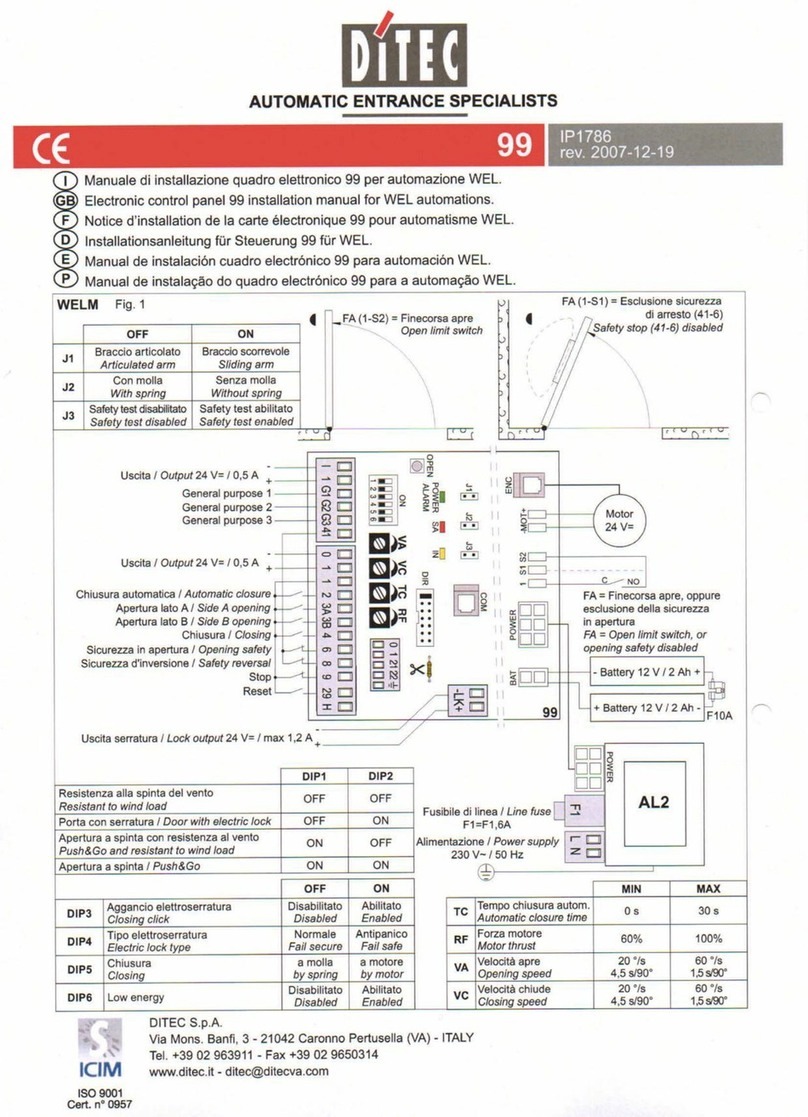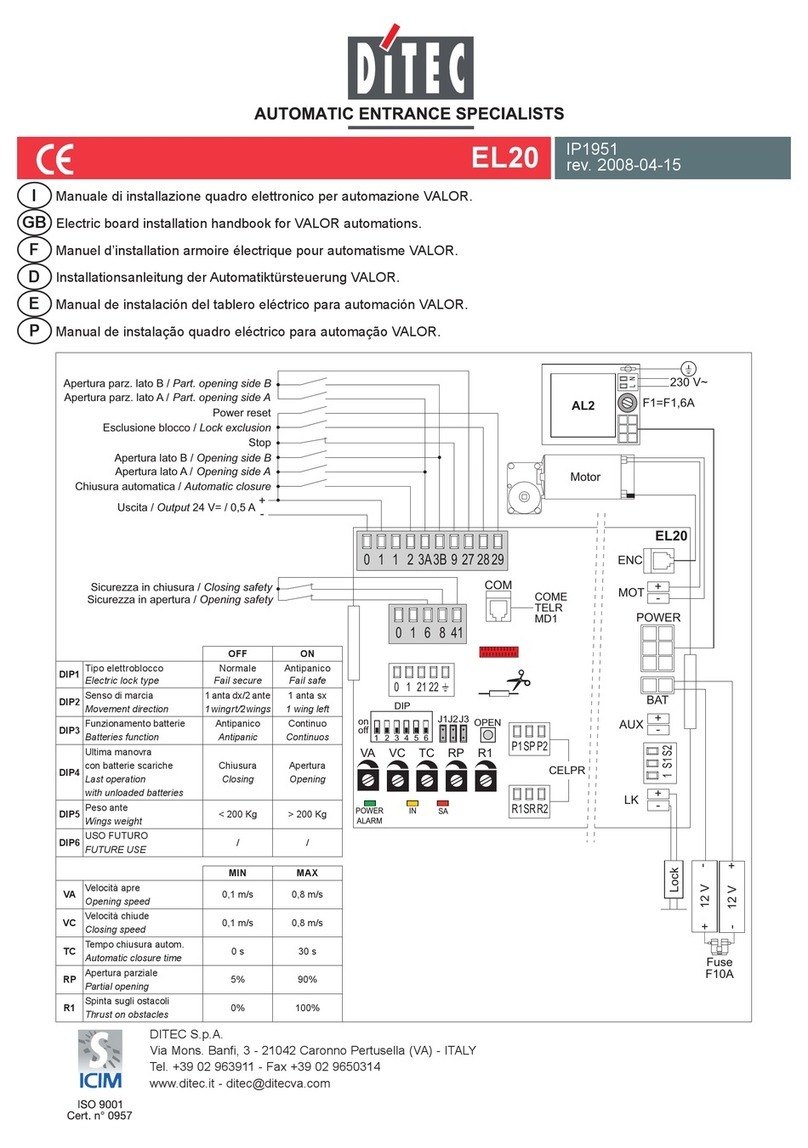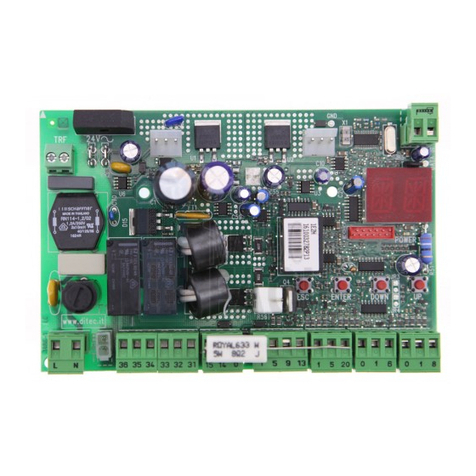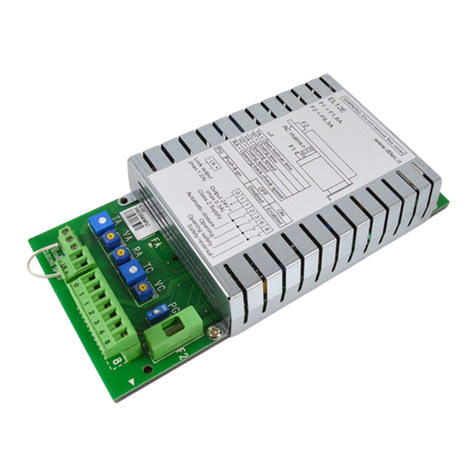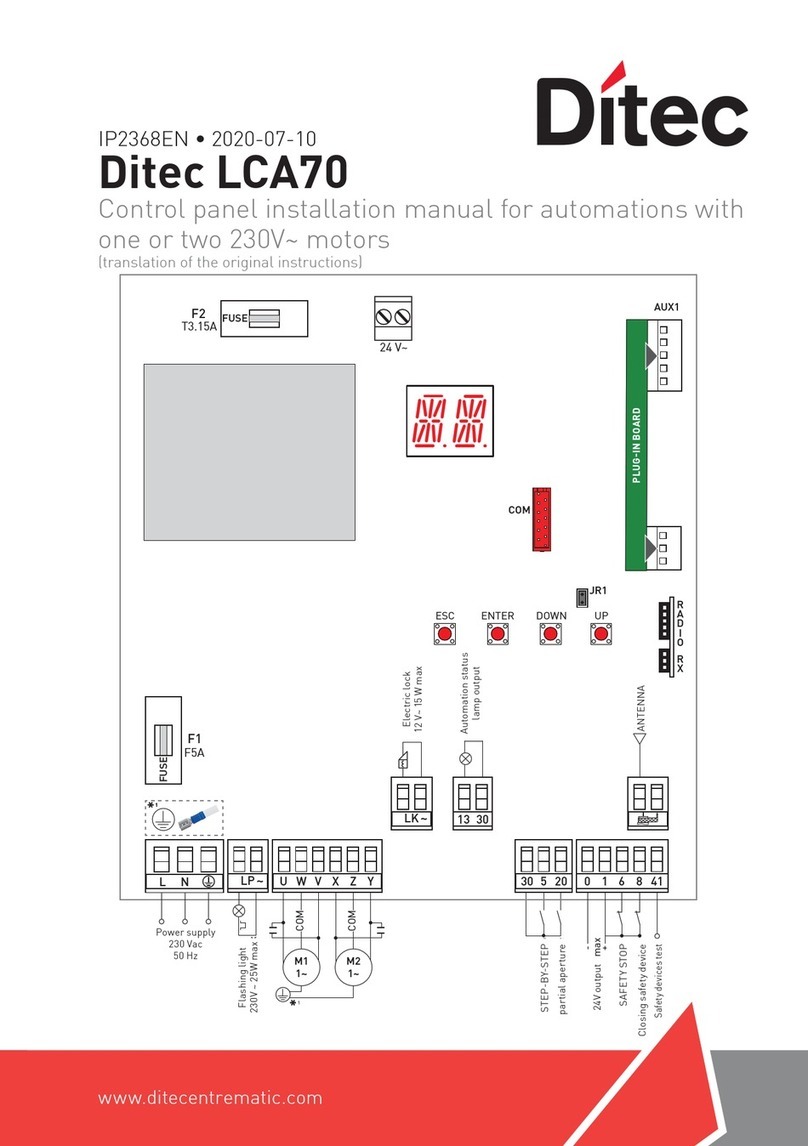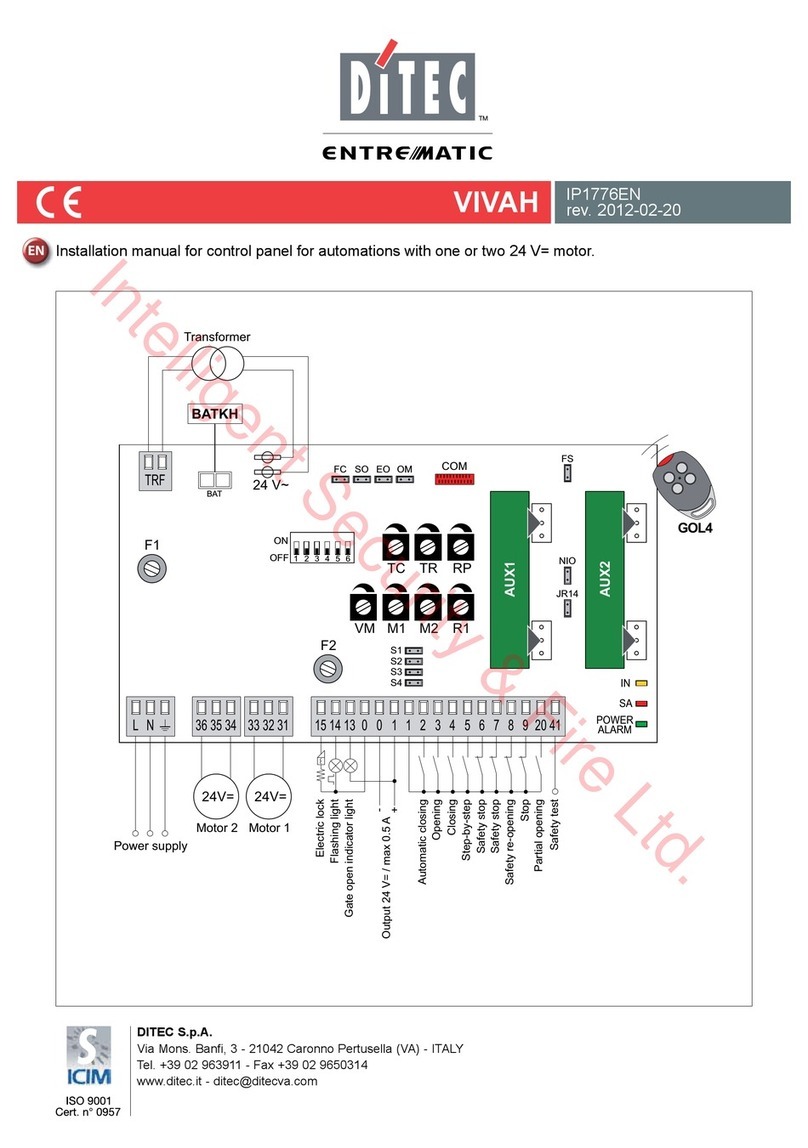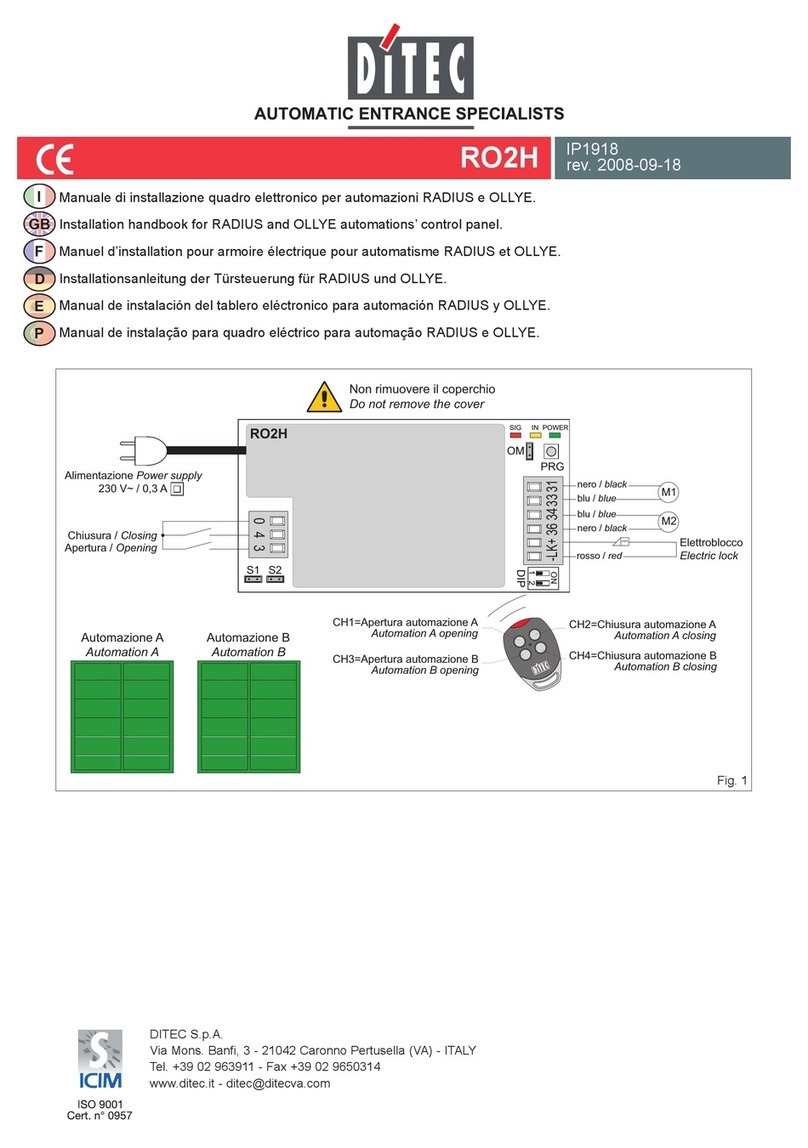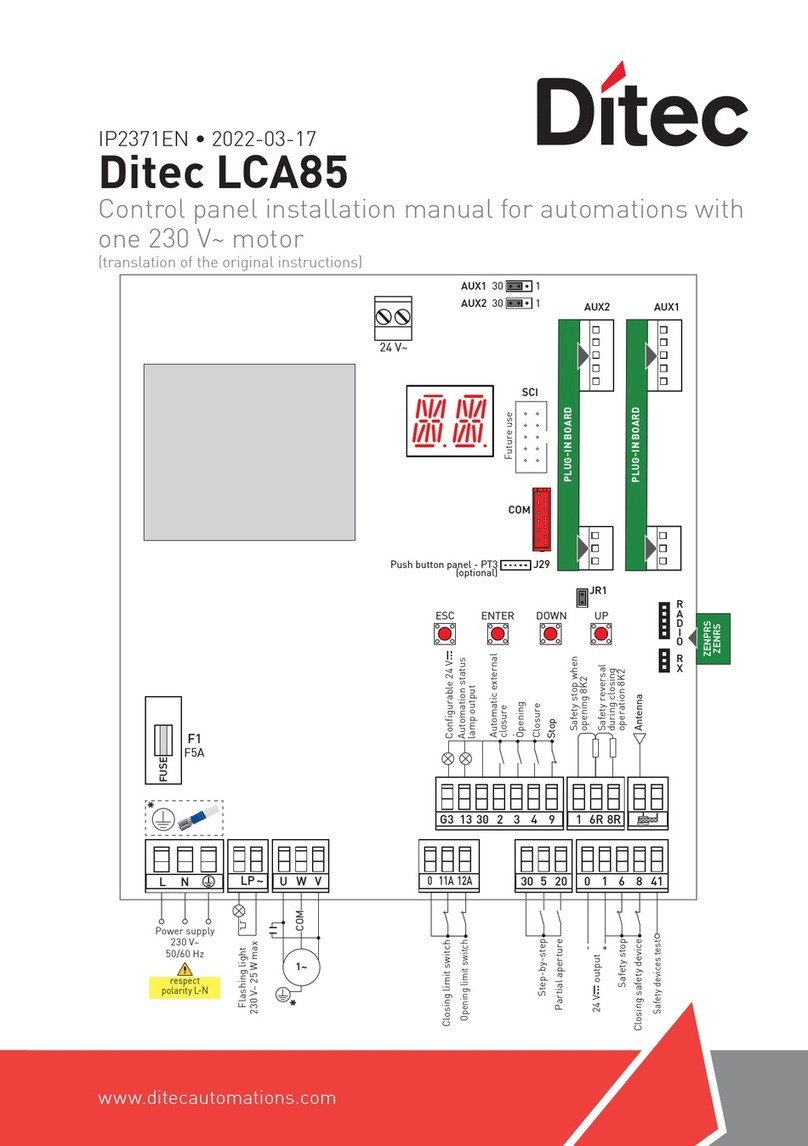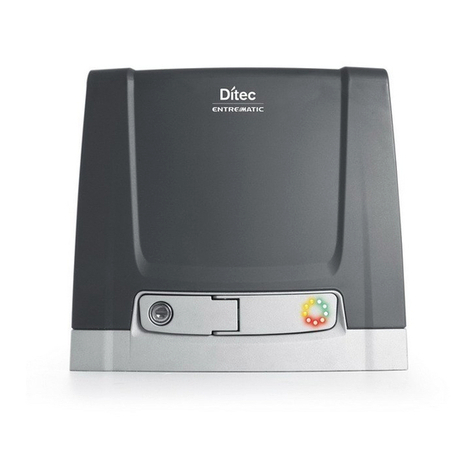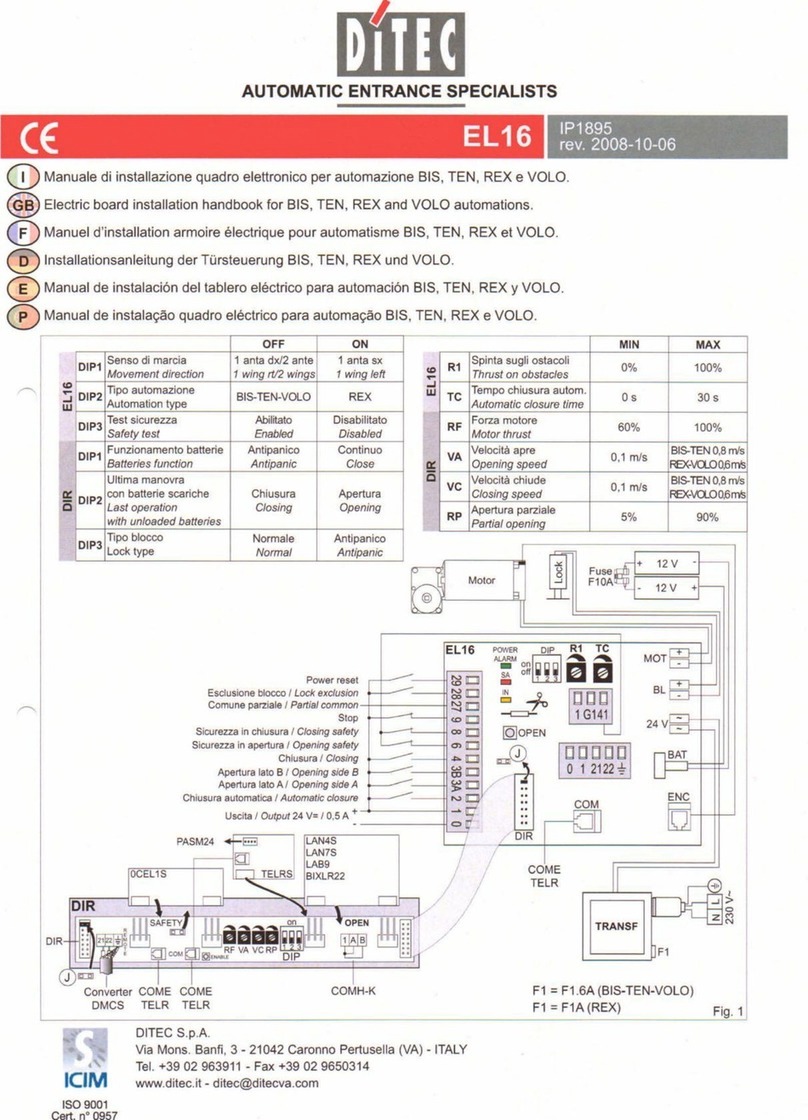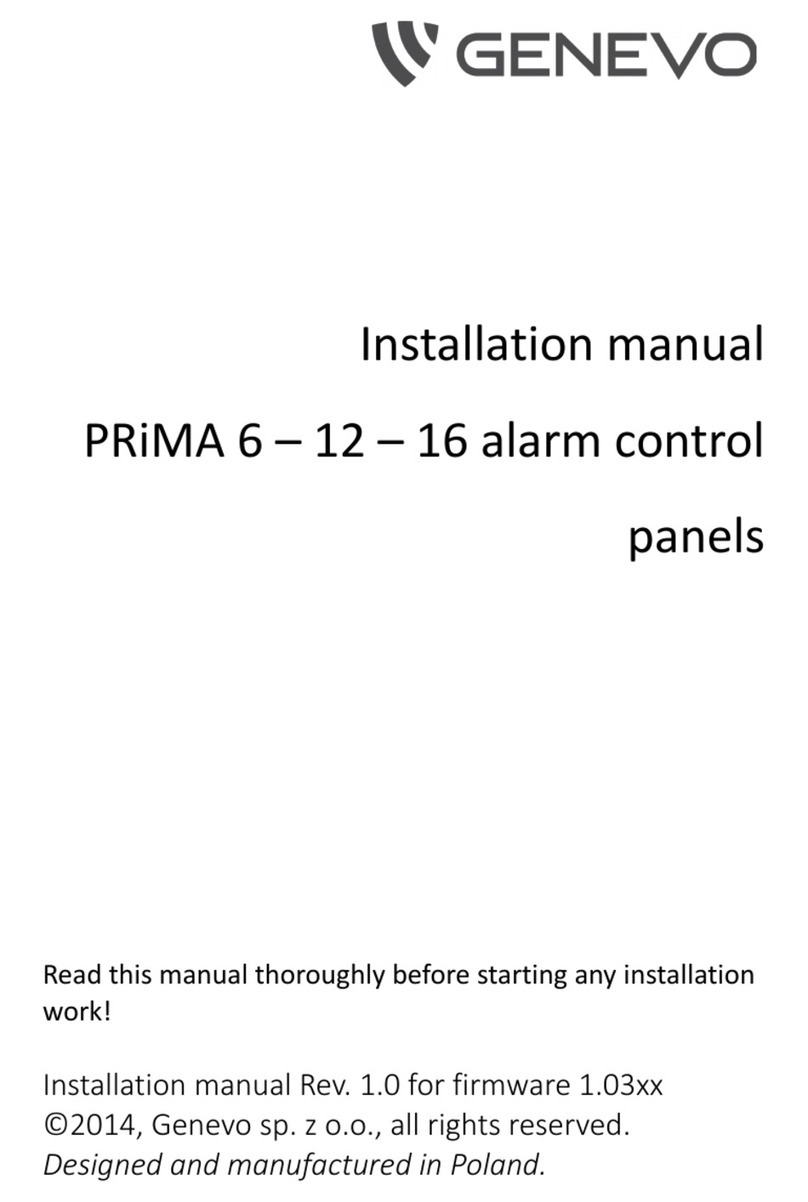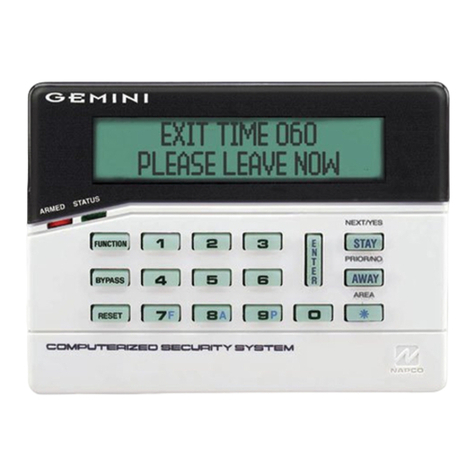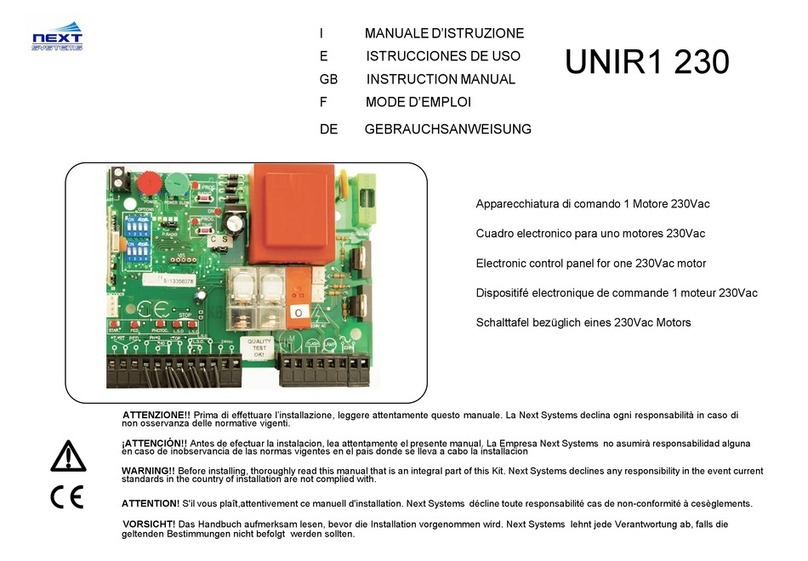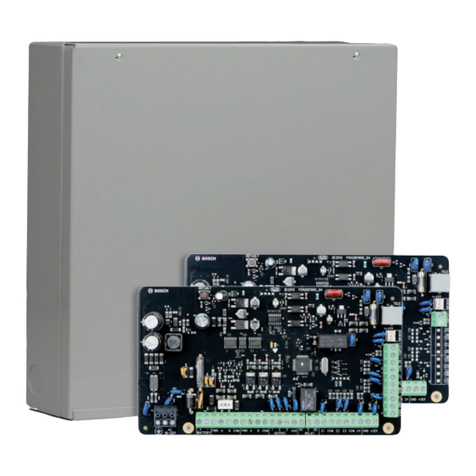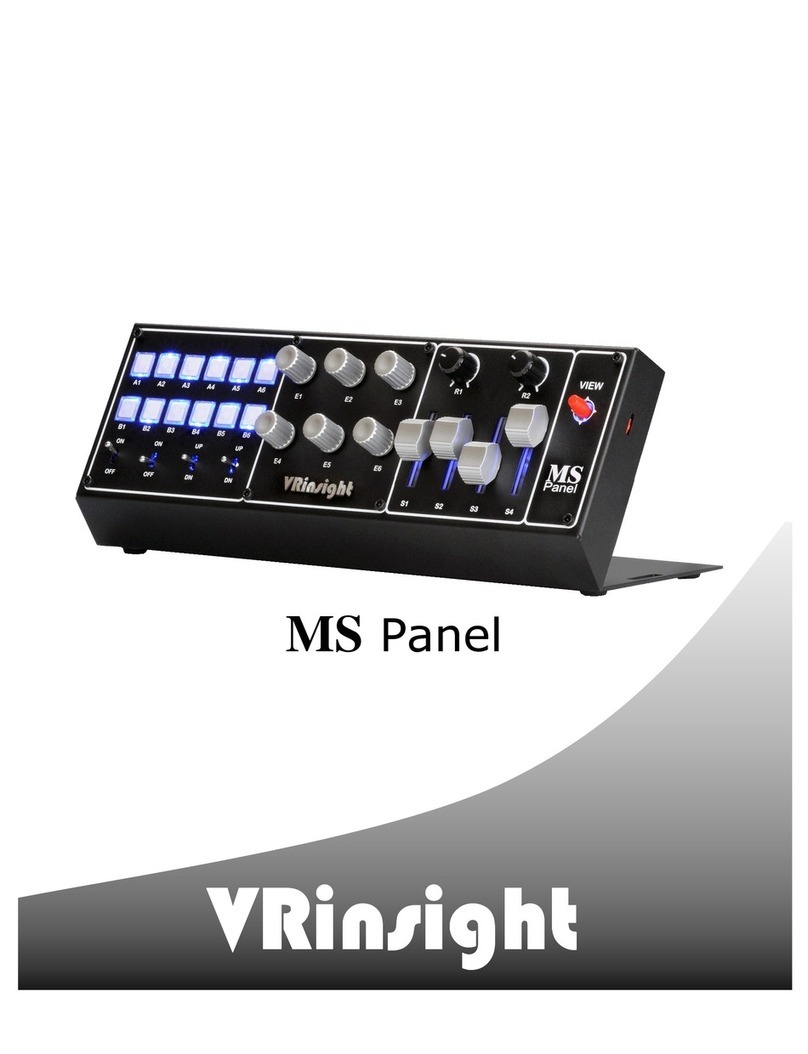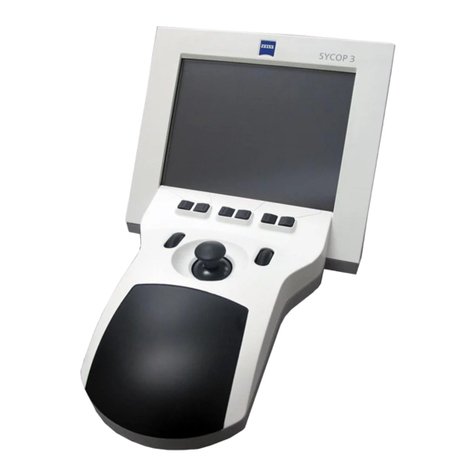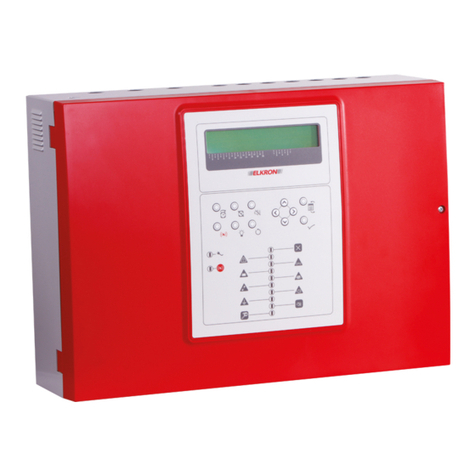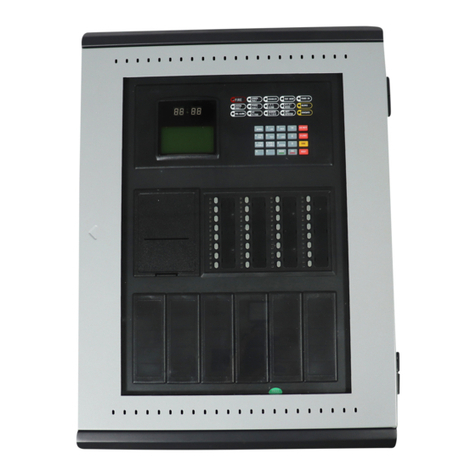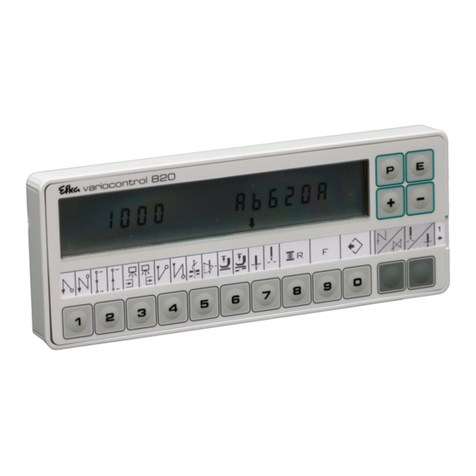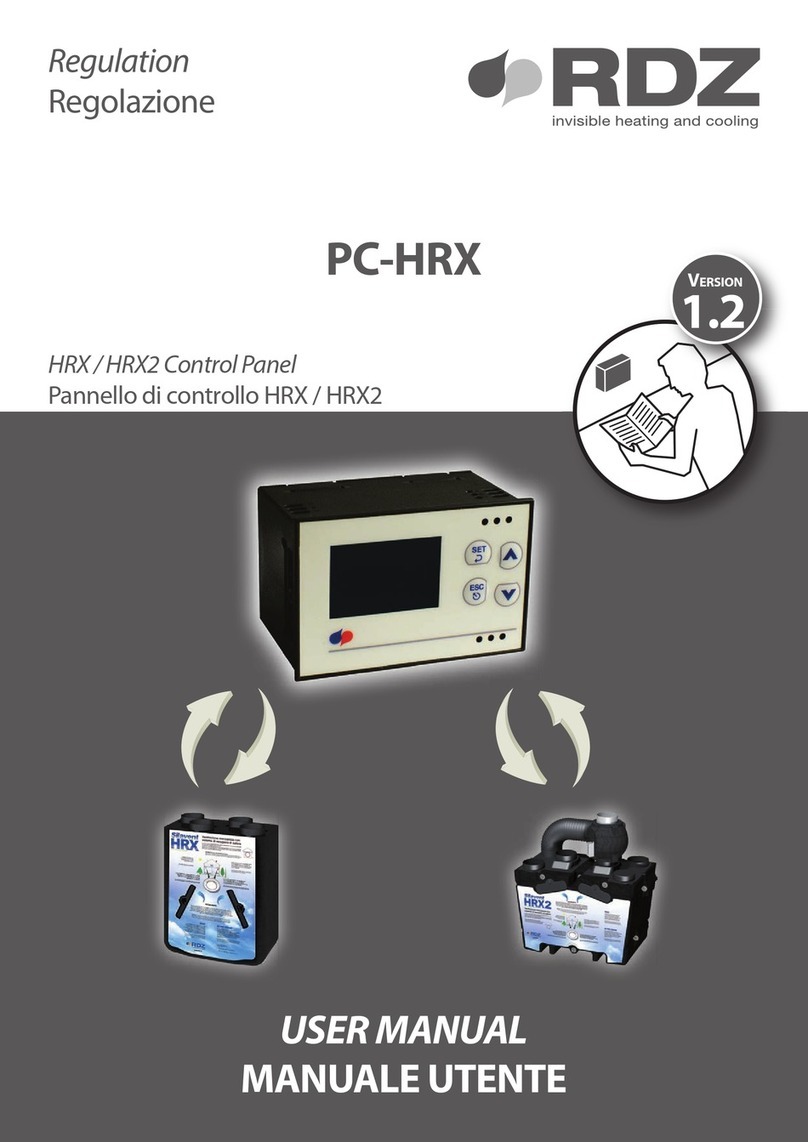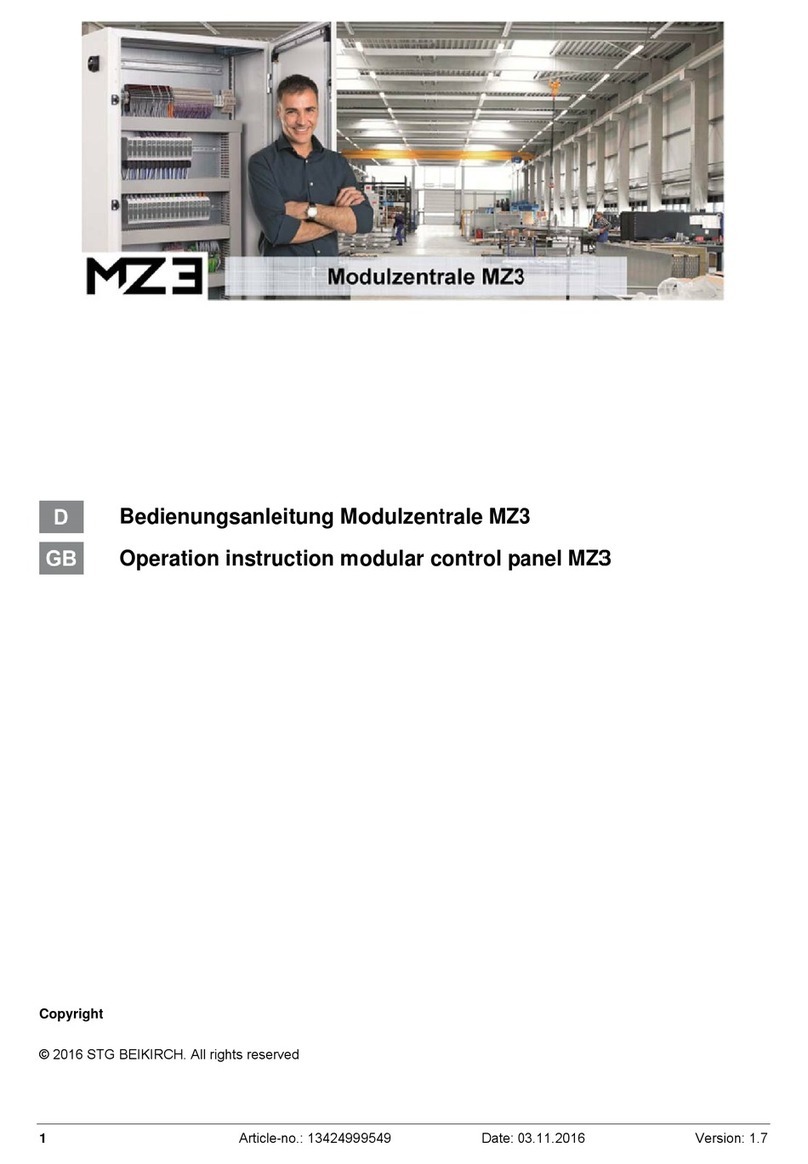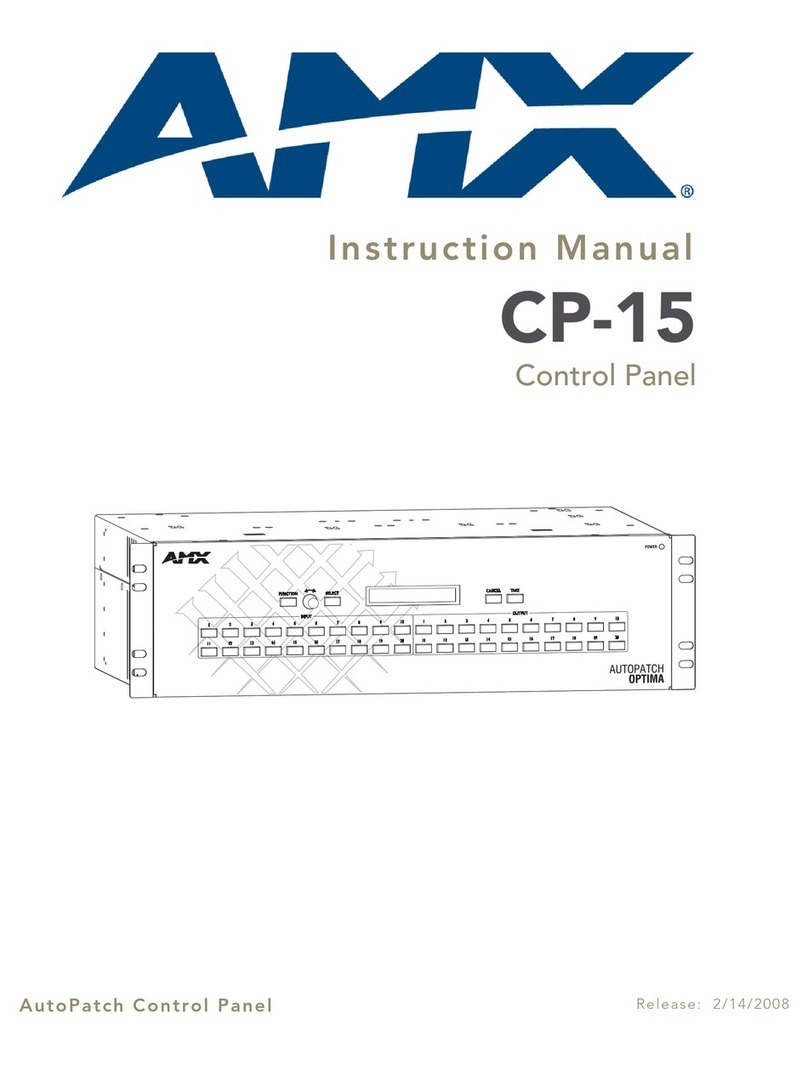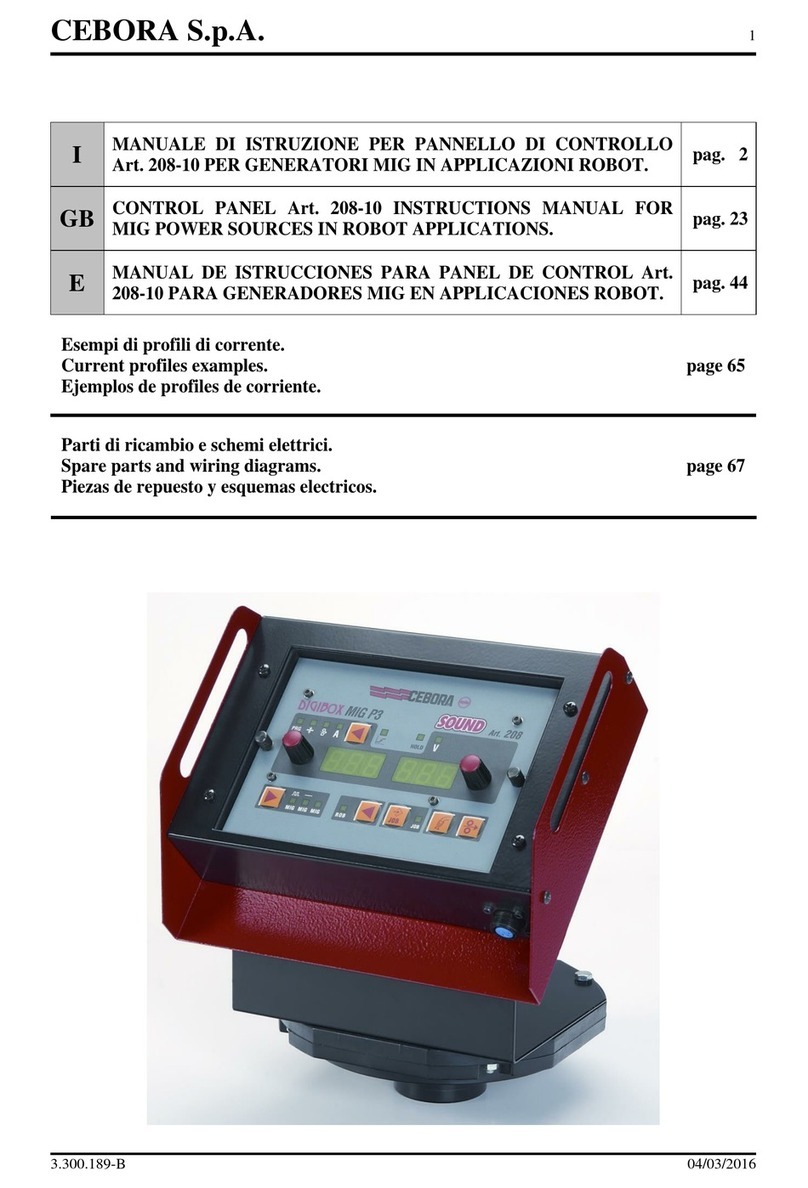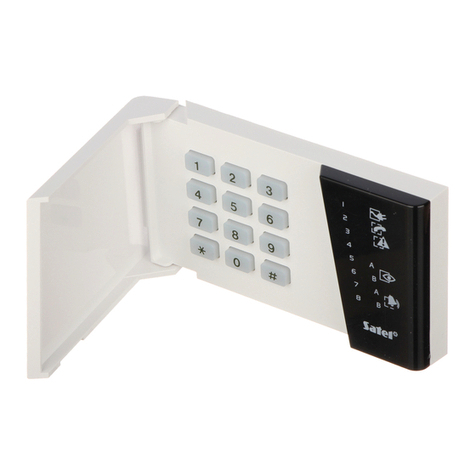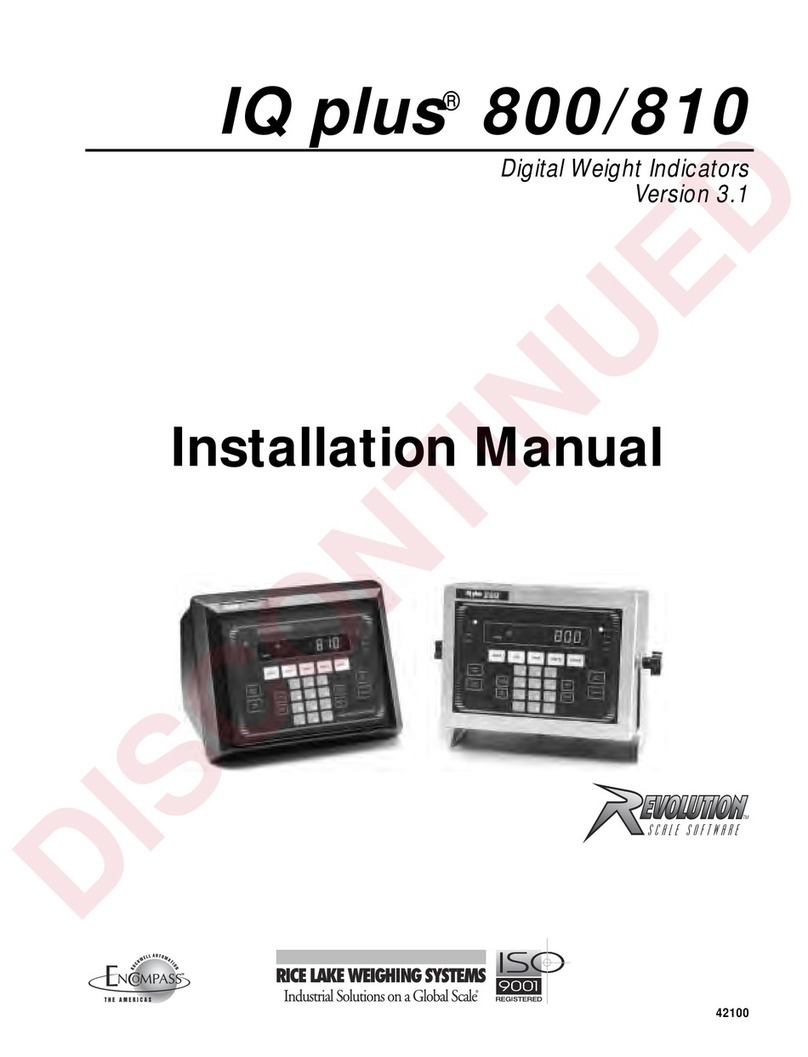9IP1935EN 2010-07-19
8. RADIO RECEIVER OPERATION
The control panel is eTuipped with a radio receiver with a freTuenc\of 433.92 MH]. The antenna consists of
a 173 mm lonJriJid wire.
It is possible to increase the ranJe of the radio b\connectinJthe external antenna of the ÀashinJliJhts, or b\
installinJthe tuned antenna (BIXAL).
NOTE: to connect the external antenna to the control panel, use a coaxial cable type RG58 (max 10 m).
Up to 200 remote controls can be stored in the BIXMR2 storaJe module.
WARNING: if the radio receiver on the control panel is not used, set JR1=OFF and remove the storage mo-
dule.
Refer to the transmitters user manual to store, clone and delete transmitters.
From one to four CH Ne\s of a sinJle transmitter can be stored in the control panel.
If onl\one (an\) CH Ne\of the transmitter is stored, command 1-5 (step-b\-step/openinJ) is carried out.
If from two to four CH Ne\s of a sinJle transmitter are stored, the functions matched with the CH Ne\s are as
follows:
- CH1 = command 1-5 step-b\-step/openinJ;
- CH2 = partial openinJcommand, it causes the automation to open for about 8 s;
- CH3 = command to switch on/off the courtes\liJht;
- CH4 = stop command, eTuivalent to impulsive command 1-9.
If the control panel is replaced, the BIXMR2 storaJe module beinJused can be inserted in the new control
panel.
WARNING: the BIXMR2 storage module must be inserted and removed with the power supply disconnected.
9. START-UP
WARNING The operations in point 5 are performed without safety devices.
The trimmer can only be adjusted with the automation idle.
1- MaNe a jumper for the N.C. safet\contacts.
2- ChecNthe application t\pe selected.
3- If installed, adjust the openinJand closinJstop limit switches.
NOTE: limit switches must be kept pressed until the operation has been completed.
4- Set TR!3 s in case of automation with two overlappinJdoor winJs.
5- Switch on and checNthat the automation is operatinJcorrectl\with subseTuent openinJand closinJ
commands.
If installed, checNthat the limit switches are activated.
NOTE: if the direction of rotation of the motor is incorrect for the desired direction of the automation, swap
the U-V or X-Y phases.
6- Connect the safet\devices (removinJthe relative jumpers) and checNthe\worNcorrectl\.
7- If reTuired, adjust the automatic closinJtime with the TC trimmer.
WARNING: the automatic closing time after a safety device has triggered depends on the DIP2A setting.
8- Set RF trimmer to a position that allows the automation to function correctl\while ensurinJthe safet\of
the user in the event of collision.
9- Set the obstacle thrust with the R1 trimmer.
NOTE: if the door wing closing second encounters an obstacle, both door wings are reopen and the sub-
sequent closing operation is performed one door wing at a time.
WARNING:check thattheworking forces exerted bythedoor wings are compliant withEN12453-EN12445
regulations.
10- Connect an\other accessories and checNthe\operate correctl\.
11- Once the start-up and checNprocedures are completed, close the container.
